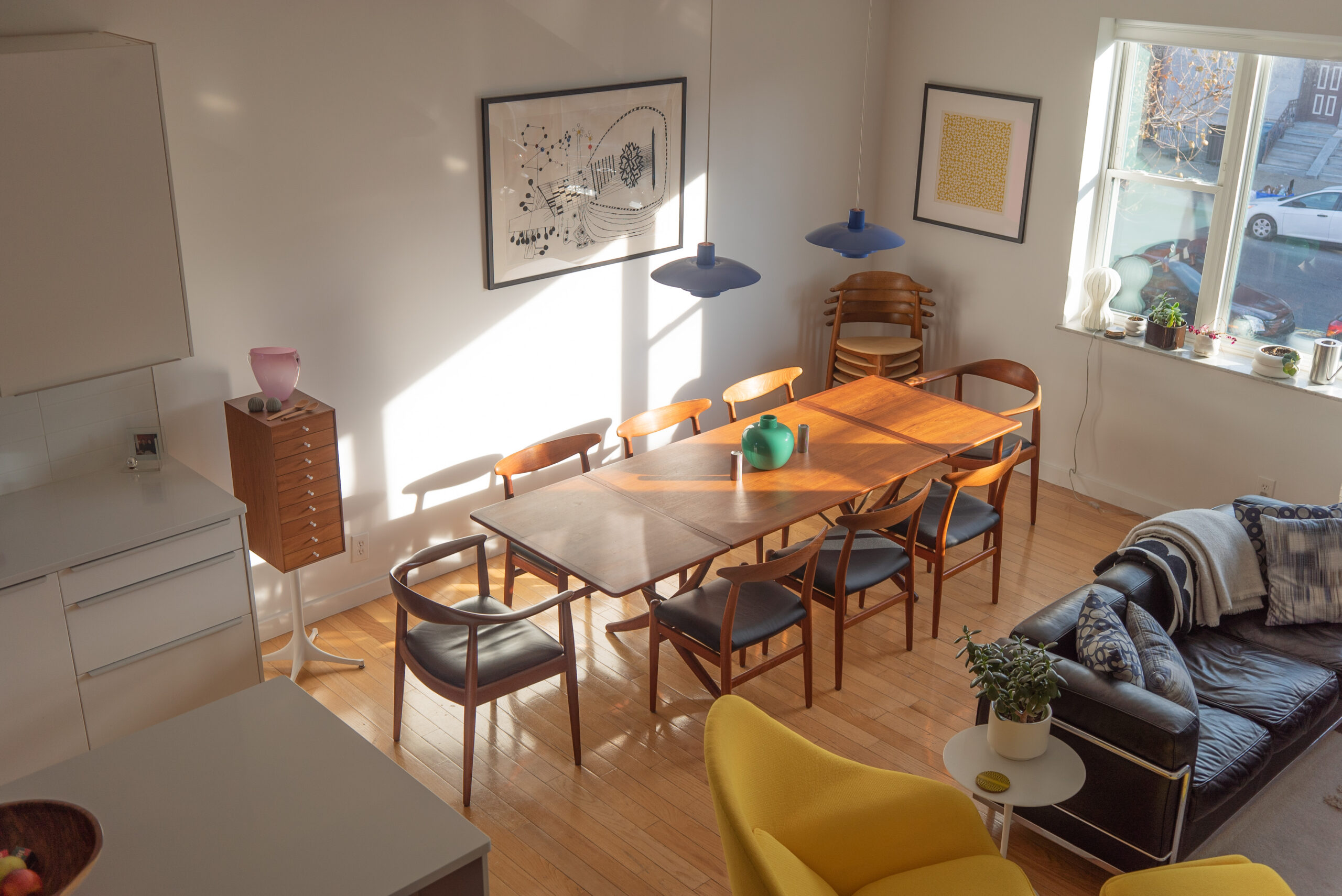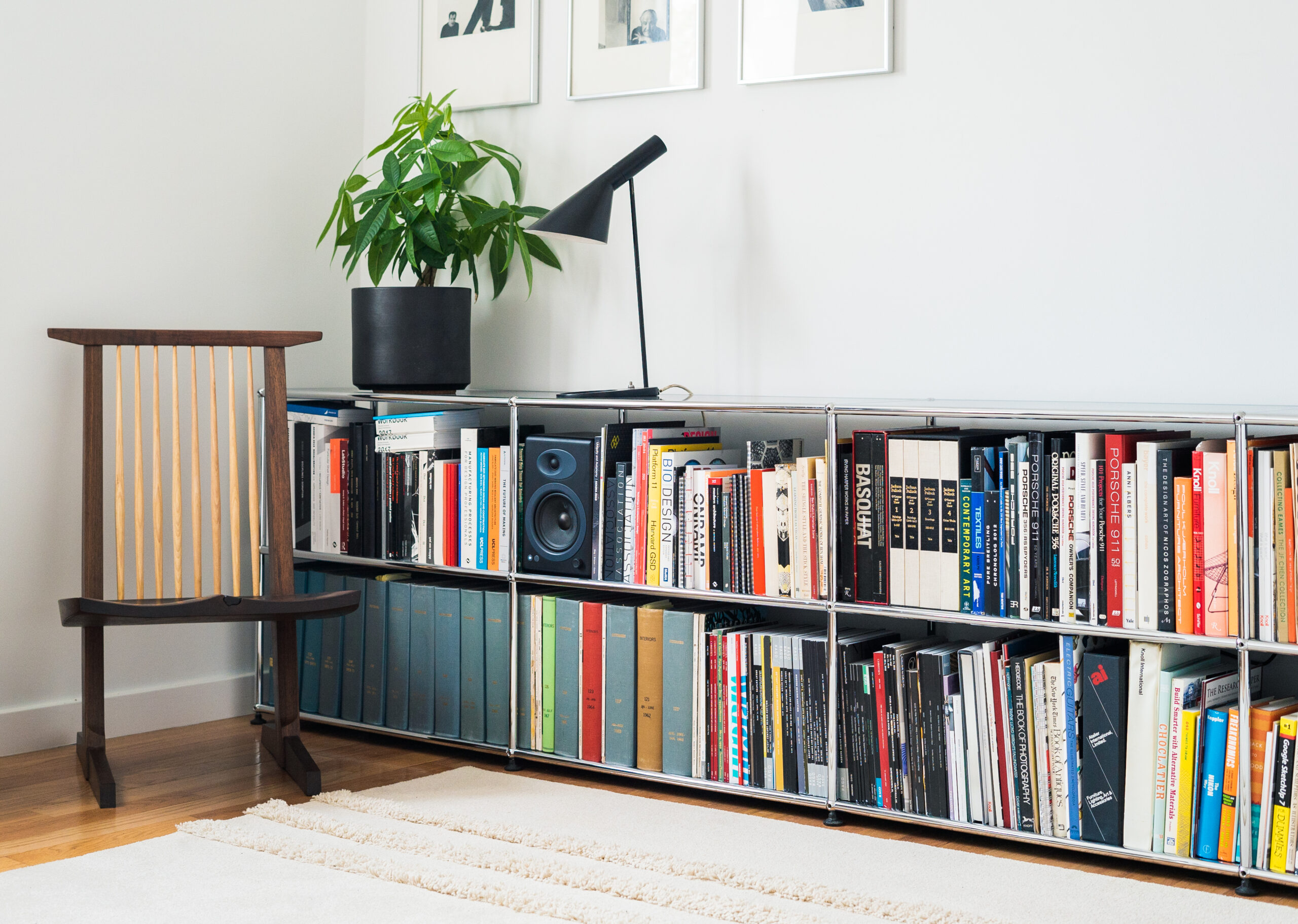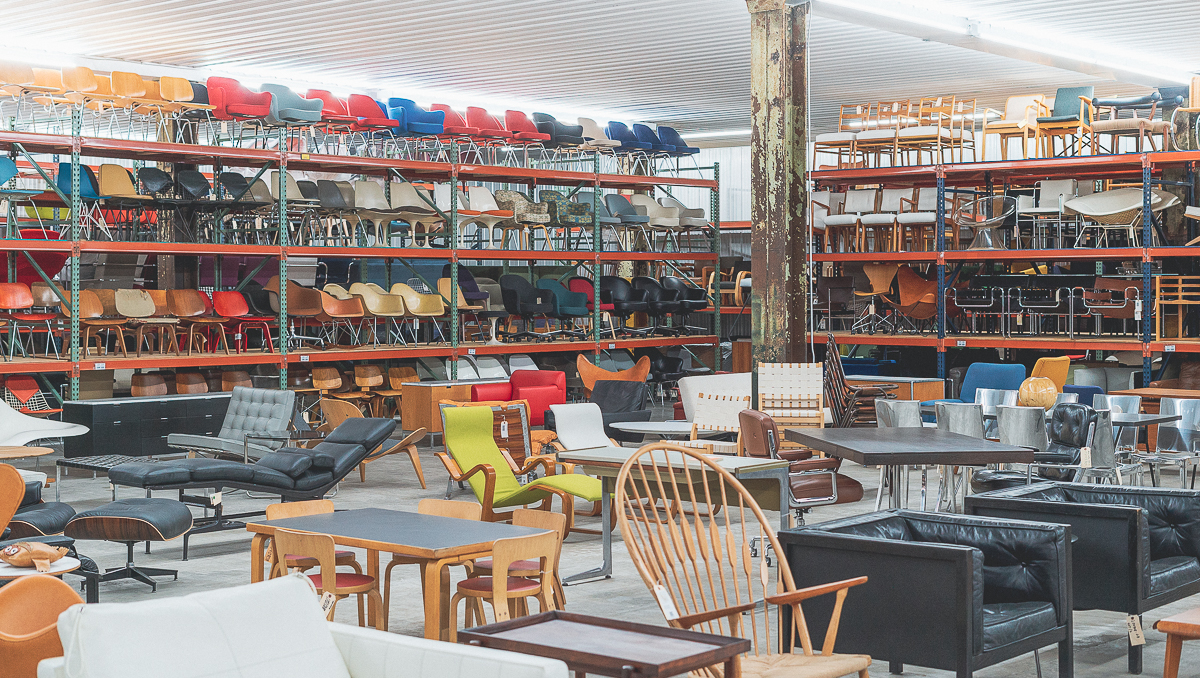NORTH STARS:
Waste Management
Heritage Value
Carbon Footprint
“As cutting-edge designers of their time, many of these architects wished to furnish their buildings with furniture that was as innovative as their buildings. Thus, many of them took the furniture design process into their own hands.”
For some context, I run a business called Rarify (alongside Jeremy Bilotti) and started another called D ROSE MOD about a decade earlier. Both focus on vintage furniture, specifically what I refer to as “20th Century Design.” The furniture and lighting we acquire and sell are generally designed by recognized architects and designers from around 1920 until today, but largely designed between 1920 and the end of the century.
I started getting into buying, restoring, and reselling furniture as a teenager. It was a gateway into learning about important architecture of the 20th century. In the early 1900s, architects such as Frank Lloyd Wright in the US and countless others in Europe and around the world, often associated with the Bauhaus school in Germany, were working on developing innovative new types of architecture, which in a way rebelled from the status quo of neoclassical architecture (among other styles), which seemed stagnant and pervasive. These architects were developing what we think of today as “modern” architecture. As cutting-edge designers of their time, many of these architects wished to furnish their buildings with furniture that was as innovative as their buildings. Thus, many of them took the furniture design process into their own hands.

Pieces in David Rosenwasser's home. Courtesy of Rarify.
To give a few examples, Florence Knoll, Charles Eames, Le Corbusier, Eileen Gray, Mies van der Rohe, Marcel Breuer, Gae Aulenti, Ettore Sottsass, Aino and Alvar Aalto, were all trained as architects and became some of the most important furniture designers of the 20th century. Some were known for their modern designs (as part of the international style movement tied to the Bauhaus), whereas others came later and responded to the modernists, creating postmodern forms that rejected the industrial or minimal designs of their predecessors. The vast majority of this furniture was produced in a factory setting and was manufactured. Some of the greats included Herman Miller, Knoll, Fritz Hansen, Carl Hansen, Artek, among many others.
What you should know is that much of the best and most collectible work of the 20th century (in the design space at least) was designed often by great architects or their collaborators and produced by specific manufacturers who are considered the “authentic” makers of these works.
Fast forward to the early 2000s and modern design has become sought after both to purchase brand new and also to buy vintage. With this popularity and advances in technology came an opportunity for bad actors to make knockoffs of many famous works, priced to substantially undercut the authentic works. Knockoffs certainly existed earlier, but proliferated with easier access to the internet and to less expensive overseas manufacturing. Year by year, knockoffs popped up at retailers like Restoration Hardware and IKEA.
Knockoffs, however, are only part of the problem. Online shopping, cutthroat price competition, and increasing consumer needs for instant gratification helped to spur on an American and global obsession with Fast Furniture, a term exemplified by $30 dining chairs on Amazon with free shipping or the loved and hated BILLY Bookcase by IKEA. Let us also not forget the thousands of furniture startups that filled up our social media ads during the pandemic trying to sell us cheap and typically poorly made furniture with a very short lifespan. The rundown is that Fast Furniture is bad because it often gets thrown away after a couple of years. Investing more in better used/vintage furniture or affordable new works made by respected furniture makers is, in my opinion, the right thing to do because it is both longer lasting and a better investment.

Pieces in David Rosenwasser's home. Courtesy of Rarify.
Let’s talk about finding vintage furniture and cost. You may think that as a dealer of fancy and expensive furniture, I need a reality check and do not understand the needs of the people. In reality, I am often looking in thrift shops, little auction houses in small towns around the US, and maybe even dumpsters for great finds. For those with more modest budgets, there is an abundance of hope to get incredible and authentic furniture for very reasonable prices.
If price is the main worry, go to local thrift shops and go relentlessly until you find vintage pieces you love. Take advantage of the 21st century thrift shop: Facebook Marketplace. Beware of knockoffs and educate yourself, but it’s otherwise a great resource for great used pieces at good prices.
If you’re set on buying brand new, there are plenty of affordable pieces made by legendary manufacturers. Kartell and Blu Dot are a couple of brands we respect with excellent design and a wide range of affordable furniture pieces. IKEA has also picked up their game and been more careful in recent years about their design legacy and quality. Imagine yourself as a curator in Ikea looking for future classics and paying attention to who designed these pieces.

Rarify Warehouse. Pieces in David Rosenwasser's home. Courtesy of Rarify.
For those of you with more robust budgets and who want to go to town in the vintage design space, get in touch with and visit local dealers who specialize in authentic works. Their prices will be higher than at thrift shops and on Facebook Marketplace typically, but their reputations are based on trust, their eyes, and their ability to curate incredible collections of authentic works. Not all dealers specialize in authentic-only works, but find dealers who you feel carry pieces that you resonate with and establish close working relationships with them. It will be worth it! Modern for All in California is a great resource, Circa Modern, Converso, and Who Modern in Chicago are terrific, and the list goes on.
Lastly, a few tips for how to ensure you’re buying pieces that are good investments. Understand who designed the furniture and who manufactured it. Look for manufacturer labels and/or learn how to authenticate the furniture. Try to understand when the furniture was manufactured. Early examples of some classic pieces are often more valuable than later ones. Pay attention to the materials that the furniture should be made from. Check that the examples you’re looking at match. Look at how the furniture was made and whether it was made well. Often good solid construction can help to further build confidence about whether the piece is worth buying. In summary, do your research as it can be easy to mistake knockoffs for the real deal if not looking closely. If you don’t have time to do your own research, then buy from trusted dealers who specialize in the type of stuff you’re looking for.
David Rosenwasser is an architectural researcher, business owner, and the co-founder and co-CEO of Rarify, a 20th century vintage furniture retailer. Follow the shop @Rarify.








